What is the Mysterious Japanese Instrument, the Koto?
Are you interested in traditional Japanese music? The koto, a beautiful Japanese instrument with over a thousand years of history, captivates people with its graceful sound. While you may have heard its melodies in movies or on TV, you might wonder, “What exactly is a koto?” or “How does it produce sound?” This article will clearly explain the koto’s history, its unique structure, and even its playing methods, making it easy for anyone to understand. By reading this guide, you’re sure to grasp the profound charm of the koto. So, let’s open the door to the world of Japanese sound!
◇What is the Koto? History, Structure, and Playing Methods Explained
-The Koto’s Roots: Its Transmission from China to Japan
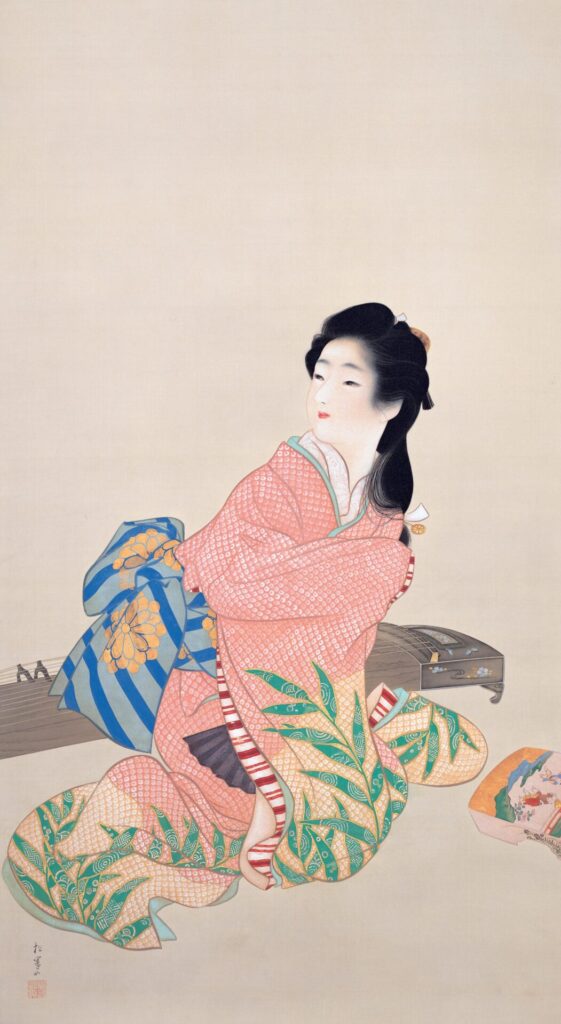
The koto’s history is ancient, with its roots stretching back to China. It is believed to have been introduced to Japan from China during the Nara Period (around 710-794 AD). Initially, it was used as an instrument for Gagaku (ancient court music) performed in the imperial court, developing within aristocratic culture. Its beautiful sound and elegant form must have enchanted the people of that time.
-Popularization and Development: From Aristocrats to the Common People
After the Heian Period, the koto was cherished as an accomplishment among the nobility, but as time passed, its role began to change. Especially from the Edo Period (1603-1868), the koto became widely popular among common people. Various schools of playing emerged, and a unique musical form called Jiuta Sokyoku developed. This significant development during the Edo Period laid the foundation for the diverse expressive power and rich repertoire of the modern koto.
◇The Koto’s Structure: Secrets of its Beautiful Sound
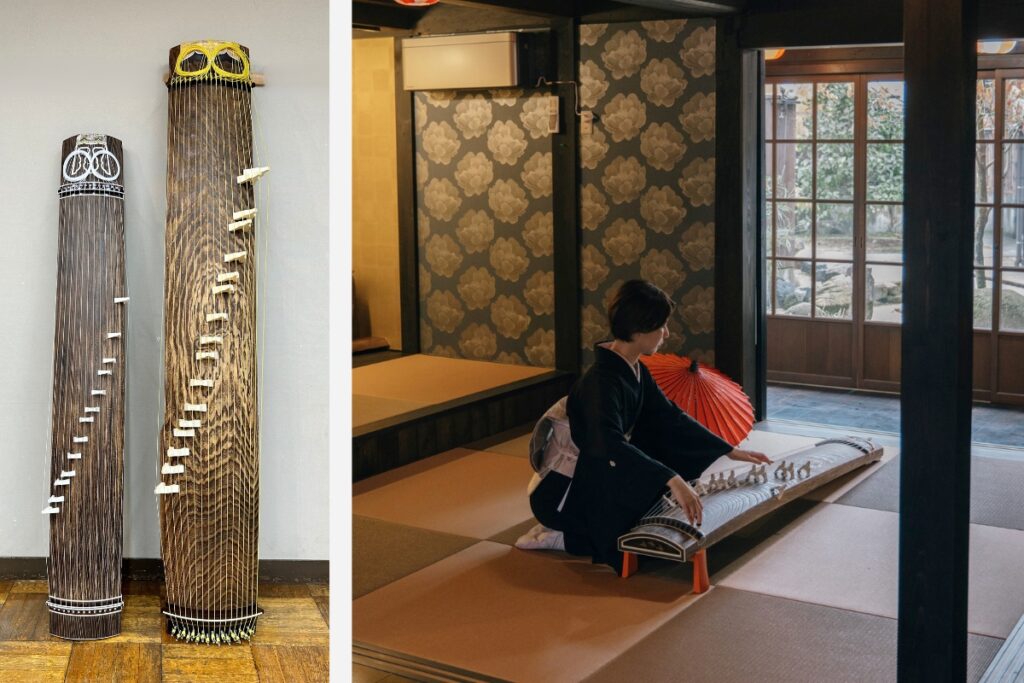
-The Koto’s Body: The Acoustic Core, Paulownia Wood
Understanding the koto’s structure also means uncovering the secrets behind its beautiful sound. The body of the koto is primarily made from paulownia wood. Paulownia is lightweight, has a beautiful grain, and is resistant to humidity. More importantly, it possesses excellent properties that enrich the resonance of sound, making it a highly valued material for Japanese instruments. The internal carving of the body and the decorations on its surface also influence the koto’s sound.
-String Types: The Role of 13 Silk Strings
A typical koto has 13 strings. Traditionally, silk strings were used, but in modern times, synthetic fiber strings, which offer superior stability and durability, have also become common. Each of these strings can produce sound independently, and when the player’s fingers pluck them, they create beautiful melodies.
-Pitch Adjustment: The Function of the Ji (Bridges) and Ryukaku (Dragon Horn)
Playing a crucial role in adjusting the koto’s pitch are the “ji” (movable bridges) and “ryukaku” (dragon horn). The ji are movable supports placed under the strings; by shifting them, the string length changes, thereby adjusting the pitch (the height of the sound). The ryukaku is located at the head of the koto and serves to collectively support the strings. Understanding these mechanisms will make the experience of playing the koto even more interesting.

-Playing Tools: Tsume (Picks) and Music Stand
To play the koto, specialized tools are required. The most distinctive are the “tsume” (picks) worn on the fingers. Made from materials like ivory or plastic, these are worn on the thumb, index, and middle fingers to pluck the strings. While there might be slight differences in tsume shape and attachment methods depending on the school, beginners don’t need to worry as they will be taught carefully in lessons. Additionally, a music stand is often used to hold the score during performance.
◇Koto Playing Methods: Basic Techniques for Beginners
-Basic Posture: How to Hold the Koto
The first step in koto playing methods is adopting the correct posture and way of holding the instrument. The koto is typically placed on the floor and played while seated. By raising the front (player’s side) of the koto slightly and stabilizing the body, you can pluck the strings without strain. Follow your instructor’s guidance to achieve a comfortable and beautiful posture.
-Attaching Tsume: Tips for a Clear Sound
Crucial for playing the koto is the correct method for attaching the tsume. The tsume should be positioned to strike the string with the tip of the finger, not the pad. This allows you to produce a clear and rich tone. It’s a simple trick that you can master in just a few tens of seconds, so you’ll be able to produce beautiful sounds quickly.
-Finger Techniques: “Hajiki” and “Sukui”
There are several basic finger techniques for playing the koto. Representative ones include “hajiki,” where you pluck the string downwards with your fingertip, and “sukui,” where you scoop the string upwards from below. By learning these fundamental techniques, you can play various melodies.
-Koto Music Score: How to Read Numerical Notation
Koto scores (koto-fu) often use numbers and symbols instead of Western five-line staff notation. This “numerical notation” is designed to intuitively show which string to pluck, making it relatively easy for beginners to learn to read without feeling a barrier from sheet music, allowing them to enjoy koto playing.
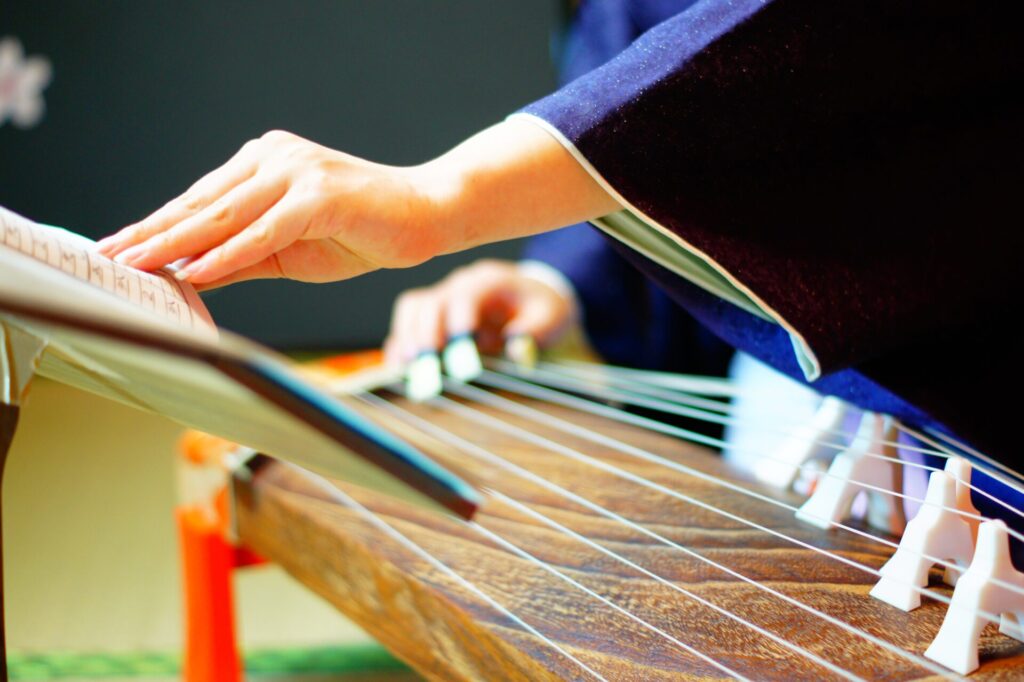
-The Koto’s Sound: Diverse Expressive Power
Expressive Techniques: The Secret to Sound Variation
Beyond simply plucking the strings, the koto possesses a remarkably rich array of expressive techniques by pressing or vibrating the strings. Techniques such as “oshite” (pressing the string to raise pitch), “hikiiro” (sustaining a note with a subtle change), and “tremolo” (rapidly plucking with multiple tsume) are used to create deeply evocative tones that describe scenes, effectively doubling its expressive power.
Ensemble with Other Japanese Instruments: The Charm of Collaboration
While solo performances of the koto are magnificent, it truly shines in ensembles with other Japanese instruments like the shakuhachi, shamisen, or traditional Japanese vocal music. The unique tones of each instrument harmonize, creating a grander and more moving world of Japanese music.
-Discover & Experience the Koto: Next Steps
Koto Appreciation: Videos and Concerts
For those who want to actually hear a koto performance, we introduce ways to easily enjoy the koto’s sound not only through concert information but also on video sharing sites like YouTube.
Experience Lessons: Touch the Koto
If you feel inspired to “actually play the koto,” we highly recommend trying an experience lesson. Many koto schools across Japan offer programs specifically designed for beginners.
The Koto is a Gateway to the Profound World of Japanese Sound
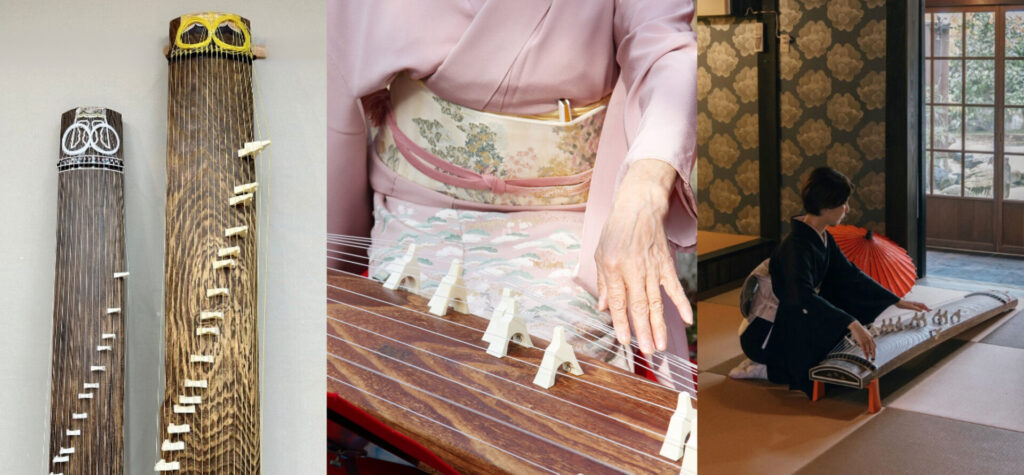
In this article, we’ve explained in detail what the koto is, its history, structure, and playing methods. We hope you’ve gained an appreciation for the deep resonance and diverse expressive power produced by its 13 strings. The koto is a Japanese instrument that even beginners can easily start learning. If the sound of the koto has captivated your heart, please consider attending a concert or participating in an experience lesson to personally touch its allure. The beautiful world of traditional Japanese music surely awaits you.

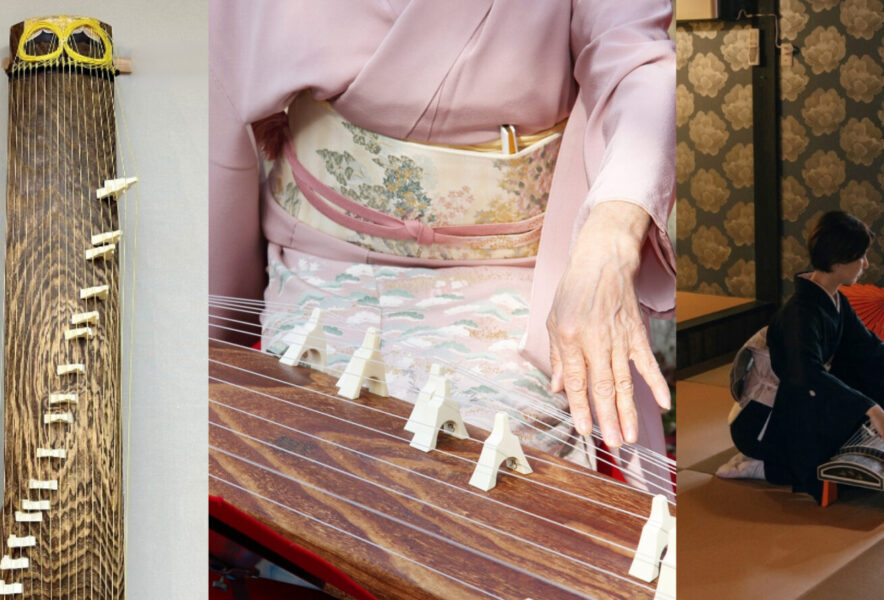
Comment